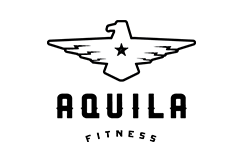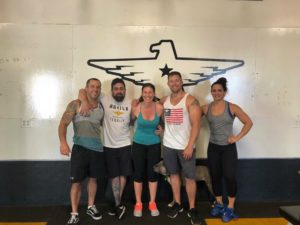View all videos in cronological order on Vimeo site.
Video Home Page
Group WODs
Charity Event WODs
CF Games Competitions
Individual WODs
Athlete Achievements
Miscellaneous Videos
CFES Level I Test Material
The Level 1 Test-
The following videos give in depth explanations of how to properly perform the fundamental movements we use in our CrossFit program. The movements for the most part are very basic. On the other hand, it will be quite challenging to gain proficiency over all of this material.
These movements are the building blocks of success in our program. Spend time studying these videos and gaining mastery over these basic movements. Once you have gained the ability to pass all of these tests, you will be well on your way to long term saftey and unlimited success in the CrossFit East Sac program.
You will be required to pass all movement tests, all skill tests, and the fitness test to gain access to the CFES Level I program. There will be some exceptions made for those with medical issues, or physical limitations, but these exceptions will be few and far between, so don’t rely on your achy old knees to get out of properly squatting.
Download Movement Test Sheet
Download Skills and Fitness Test Sheet
Squat Proficiency Test from CrossFit East Sac on Vimeo.
Movement Proficiency Test #1 – Squats
The squat is the most fundamental functional movement in. Your ability to squat correctly is nearly a pre-requisite to all other movements. Inability to squat with proper is an indicator of muscle imbalance, lack of mobility, and poor muscle activation. All of these things lead to poor gross movement and can cause injury when performing everyday tasks. Gaining the mobility and control over ones muscles to a degree of proficiency in the squat helps to correct these problems and create a better athlete who is more resilient to injury.
Do not take the squat variations lightly as simple to learn. Although some people will come into the gym and learn the squat quickly, others will struggle. Those who have severely tight or weak posterior muscles will have to work very hard to create a proper squat position. If you find it hard to master the squat, do not despair, just keep working, listen carefully to your coach, and you will get it. The physical benefits you will gain from mastering these movements will prove monumental in your fitness.
Here is a demonstration of what we will be looking for in the test and of the points of performance that we will be watching for to deem you proficient in the squat variations.
Points Of Performance: (apply to all squat variations)
Maintenance of lumbar curve
Weight in heels
Knees out
Full range of motion
5 Reps Air Squat
All points of performance
5 Reps Front Squat 45/33 (3:45)
Proper front rack, bar rests on shoulders, not held in hands
Elbows in front of bar
All points of performance
5 Reps Overhead Squat 45/33 (5:20)
Bar held over back of shoulders
Shoulders active
Elbows locked
All points of performance
Test Demo (9:22)
Overhead Press Proficiency Test from CrossFit East Sac on Vimeo.
Overhead pressing is another essential functional movement which we all must gain the ability to perform correctly. The ability to lift objects overhead is necessary for daily activities. A technically correct overhead press requires a great degree of shoulder mobility and balanced musculature of the upper body. Shoulder mobility will prove to be the biggest challenge one will face in achieving the proper positions for pressing. Those who lack the mobility to overhead press are likely to have poor posture and are likely to suffer shoulder injuries. Working to correct these mobility issues and creating a balanced press will help improve posture and prevent injuries to the shoulders.
While the basic shoulder press is a great indicator of upper body strength and mobility, the push press and the push jerk challenge more difficult aspects of fitness such as mid-line stability, full body strength, speed power, coordination, agility, balance, and accuracy. While learning the press may not prove to be all that difficult (unless you have severely tight shoulders), learning to unleash the power of the push press will be much more challenging, and learning the coordination, timing, and positioning for the push jerk will challenge even the best athletes.
If you struggle to meet the requirements for the overhead press variations, you will likely need to spend a great deal of time and effort working on shoulder mobility. If you struggle with the coordination aspect of the movement, we will give you drills to help build muscle memory. Like the squat, if you struggle to perform the press correctly, you are likely on a pathway to dysfunction or injury and correcting the issues will help you unleash tons of potential.
Points of Performance: (apply to all press variations)
Proper setup
Midsection remains neutral
Straight bar path
Proper finish position
Setup:
Feet hip width
Bar resting on body
Full grip with thumb around bar, just outside shoulders
Elbows slightly in front of bar
Finish:
Full lockout of hips and knees, shoulders and elbows, with active shoulders
Bar is locked out directly over the back of the shoulders
Head through the window with ear visible from the side
Movements and Requirements:
Shoulder Press (@ 1:05)
Must demonstrate all points of performance simultaneously
Push Press (@ 3:31)
Vertical dip and drive
You must complete hip extension before initiating the press
All points of performance
Push Jerk (@ 5:40)
Vertical dip and drive
Hip opens completely on drive
You must complete hip extension before initiating the press
Bar is received or locked out in a partial squat position
Feet remain inside shoulder width upon lockout
All points of performance
*Demonstration of Movement Proficiency test #2 @ 7:44
Deadlift Proficiency Test from CrossFit East Sac on Vimeo.
The deadlift is another crucial movement in fitness training and in your daily life. Imagine for a second that you were unable to pick something up off the floor. Life would be quite difficult. We don’t want you to just be able to pick things up, we want you to be able to lift really heavy things, and we want you to do so safely.
When most people think about core strength, they think of doing crunches and holding planks. These exercises have little if anything to do with core strength. Really what we are talking about is mid-line stability, or your ability to turn your spine into a rigid structure that can transmit the force produced by the hips into the extremities. Mid-line stability is much more dependent on the strength of the spinal erectors than of the abdominals. The abdominals play a crucial role in creating intra-abdominal pressure and stabilizing the spine, but the muscles of the lower back are far more important for maintaining a rigid spinal position.
The ability to reach down to the floor, and keep proper spinal alignment while lifting heavy objects is a true indicator of ones mid-line stability or core strength. Gaining the ability to properly deadlift will save you from a lifetime of back problems.
Points of Performance:
Proper setup
Midsection remains neutral
Hips and shoulders rise together
Bar remains in contact with the legs throughout movement
Hips open and knees locked in finish position
Bar is lowered in the same fashion it is lifted
Setup:
Feet hip width
Weight in the heels
Lumbar curve locked in
Bar touching the shins
Arms Straight
Grip wide enough to allow knees to track straight
Setup, Sumo Deadlift:
All the same, except
Feet outside shoulder width
Grip inside the legs
Movement and Requirements:
Deadlift 3 reps @ BW/.75BW
Proper setup and finish
No bouncing, bar must start from a dead stop each rep, hence deadlift
All points of performance requirements are met
*Demonstration of Movement Proficiency test #2 @ 7:13
Burgener Warm-Up Proficiency Test from CrossFit East Sac on Vimeo.
The Olympic lifts, the snatch, the clean, and the jerk, are the most technically challenging movements we must learn to become proficient CrossFitters. These movements have been described as gymnastics with a barbell. Olympic lifters spend their entire lifetime continually trying to improve their technique on these lifts. The good news is that learning to perform these exercises unlocks limitless physical potential. Nearly every elite athlete uses the Olympic lifts in their training.
The Burgener warmup was developed by Coach Mike Burgener, who has successfully taught the lifts to everyone from elite lifters, to CrossFitters, to high school students, to grandmothers. This sequence of drills is designed to introduce the movements of the snatch in a way that builds muscle memory and correct movement patterns. Mastering each element of this sequence will help you master the most important elements of the lift. It will teach you to use your hips forcefully, to follow your hip extension with an aggressive pull on the bar, and to learn proper foot work for receiving the bar overhead. Learning to lift the weight with your hips and not with your arms is probably the most important thing this movement sequence will teach you.
The Burgener warmup is performed with a sequence of snatch drills, but these drills will transfer directly to the clean. The clean has the same body mechanics as the snatch. The only difference is that the bar is only moved to shoulder height in the clean vs. overhead in the snatch. If you can learn to snatch then you will know how to clean. If you know how to snatch and clean, then the jerk just becomes just plain fun.
Watch this video over and over. Get a broomstick out of your closet and practice each movement over and over until you can do them perfectly. Once you have mastered the elements of each movement, perform the entire sequence with 3 reps of each movement. Learn this, master it, and use it daily in your warmups to help engrain proper movement. Mastery of the Burgener warmup will help you become a proficient weightlifter, and get you ready to learn more advanced lifting techniques.
Burgener Warmup-
3x Down and Up
3x Elbows High and Outside
3x Muscle Snatch
3x Snatch Land
3x Hang Power Snatch
Movements and Requirements:
Down and Up- (Learn to open your hips forcefully)
Dip down
Hips open and shoulders shrug (jump)
Arms remain straight
Elbows High and Outside- (Learn to follow the hip opening with the arm pull)
Starts with the down and up
Arms pull the bar upward AFTER hips finish opening
Elbows pull straight upward keeping the bar close to the body
Muscle Snatch- (Learn how the barbell moves into the overhead position)
Starts with the down and up
Arms pull the bar upward AFTER hips finish opening
Elbows pull straight upward keeping the bar close to the body
When elbows reach maximal height, the bar is turned over and pressed overhead
*After the hips open, re-dipping or re-bending of the knees is not allowed. You must remain tall throughout the finish of the movement.
Snatch Land- (Learn to move feet from jumping to landing position)
Feet start hip width
Aggressively pick up the feet and move them to a squat stance
Stop the downward movement aggressively, no sinking after landing
Hang Power Snatch- (Learn to put it all together)
Start with the down and up (arms straight until full hip extension)
Pull the bar overhead using the motion from the muscle snatch
Land in the same position as snatch land
Test Demo @ 7:07
GHD Proficiency Test from CrossFit East Sac on Vimeo.
The glute hamstring developer is a widely used piece of equipment in the strength training world. We perform supplementary exercises on the GHD daily in our workout program. The movements are not especially complicated, but many of our members get confused about which movement is which, and how to perform the movements correctly. The main purpose for including this in the test is so that we can assume that you know how to perform these movements without instruction or supervision. We need to be able to focus our attention on more technical aspects of the workout.
Confusion often arises when trying to differentiate between the hip extension and the back extension. Just remember, the name of the movement refers to the joints in your body that will be in motion. On the hip extension, your spine is locked into a neutral position, and your body rotates at the hip joint. On the back extension, you will unlock your lumbar curve and you will be moving the joints of the spine. Seems simple enough, but we get asked nearly every day, “which one is back extension again?” Just take a second and think about the name of the exercise, and which part of your body we are referring to.
Another concern that is pretty simple to learn, yet many mistakes have been made, is to make sure the machine is adjusted correctly to fit your body. Since we are all different shapes and sizes, each person will need to make sure the machine is adjusted to fit their body and that the adjustment is appropriate for the specific exercise you intend to perform.
Hip Extension:
Adjust machine so the hip joint is even with the front of the leg roller
Maintain lumbar curve
Rotate down at the hip joint
Rotate up until your body is in a straight line with your legs
Back Extension:
Adjust machine so the hip joint is even with the front of the leg roller
On the way down,
-Round you neck down first
-Round your upper back down next
-Round your lower back last
On the way up,
Straighten the low back first
Straighten the upper back next
Straighten out the neck last.
Glute Ham Raise:
Adjust the machine so your knees rest on the knee pad
Start with a full range of motion hip extension
At the top of the hip extension,
push your knees down and raise your body into an upright position
Straighten your knees so your body is horizontal,
and begin again
GHD Sit-Up:
Adjust machine so your glutes hang off the roller and you are resting on your hamstrings
Lay back with your knees bent upward
Straighten or extend your knees aggressively
Sit up
Skill Proficiency Test from CrossFit East Sac on Vimeo.
This portion of the test is designed to show that you have a well rounded entry level skill set that will allow you to perform most CrossFit WODs effectively. Each person will struggle with different parts of this test. With this portion of the test we aim to identify significant weaknesses and then exploit them until they are no longer weaknesses.
#1 Tabata Squat:
8 Rounds of
:20 sec Air Squat
:10 sec Rest
*You must perform at least 10 body weight squats with a full range of motion in each :20 second work interval.
#2 Sit-Ups:
Using an ab-mat with your feet anchored under dumbells you must perform at least 30 sit-ups in 1 minute or less. Shoulders must touch the floor at the bottom of the sit-up, and elbows must touch the knees at the top.
#3 Kipping Pull-Ups:
Perform 10 consecutive rythmic kipping pull-ups with out stopping. You may use a blue or red band if needed, but you may not stop at any point once you complete the 1st rep. Full range of motion is required, arms straight at the bottom and chin above the bar at the top.
#4 Push-Ups:
Men must perform a set of 10 push-ups, and women must perform a set of 5 push-ups. Push-ups must be full range of motion chest to the floor and elbows locked at the top. You must stay in push-up position the entire time, and no snaking is allowed.
#5 Hang Power Cleans:
Perform a set of 10 hang power cleans with 95# for men and 63# for women. Once the bar is picked up off the floor it may not be lowered below knee level until all 10 reps are complete.
#6 Double Unders:
Perform 10 successful double unders in less than 1 minute. You may do the double unders in and combination of singles and doubles, as long as the jump rope successfully goes under your feet twice with out stopping.
#7 Box Jumps:
You will have one minute to complete 10 box jumps. Men will jump to a 24″ box and women to a 20″ box. Both feet must jump and land together and you must stand all the way up at the top of each rep.
#8 Running:
You must run 400m on our parking lot course in 2:05 or less.
The General Fitness Test from CrossFit East Sac on Vimeo.
The final portion of the Level I testing process is designed to demonstrate a baseline level of fitness, or power output ability. It is a classic CrossFit timed workout that involves a mono-structural movement… rowing, a weightlifting exercise… wall ball, and a gymnastic movement… jumping pull-ups. The exercises themselves are fairly low skill level so that we can really test your work capacity vs. your ability to perform high skill level functional movements. Passing of this test will be an absolute requirement to gain access to the Level I program.
The WOD-
For Time:
Row 1000m
30 Wall Ball M-12# Ball/10 Foot Target, W-8# Ball/9 Foot Target
30 Jumping Pull Ups
You must keep your feet on the rower until the 1000m counter has reached 0. For wall balls, you must squat to below parallel and make a clean hit on the wall ball target. Missed squats and missed throws will not be counted. For the pull-ups, you will be required to swing your head and chest in front of the pull-up bar with your arms completely extended at the bottom, and jump your entire chin above the bar at the top.
Men must complete the workout in less than 8:00 minutes and women must finish in less than 9:00 minutes.





